Invigorating Muong ethnic group’s craft of making ‘Do’ paper
|
|
Historical documents show that the Do papermaking craft was first practised by Nghia Do villagers in Cau Giay district, Hanoi, before it was developed in Buoi village in Tay Ho district, Hanoi. The craft was then transferred to Dong Cao villagers in Bac Ninh province.
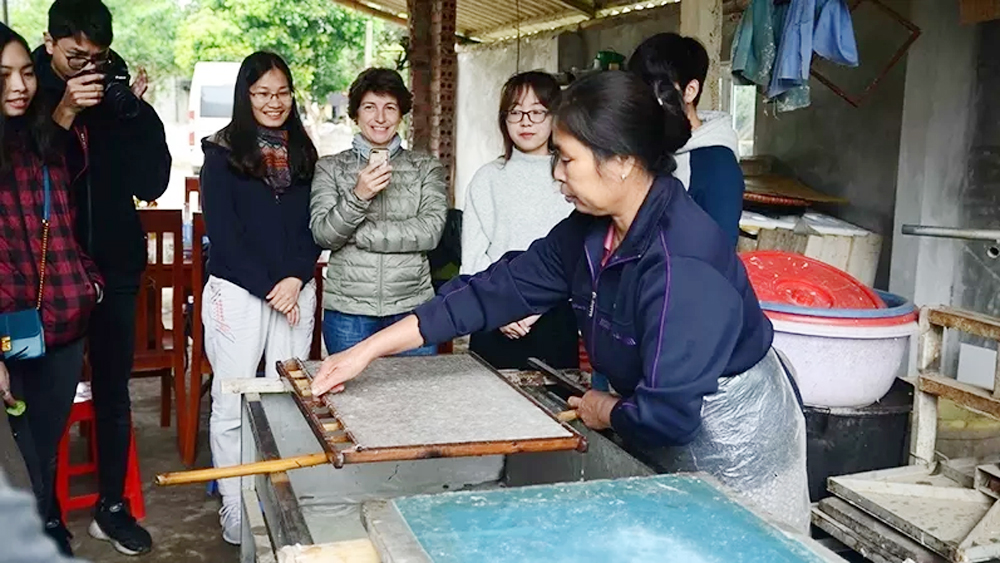 |
|
Artisan Hoang Thi Hau shows visitors how to acquire paper fibres. |
It wasn’t until 2006, when the Vietnam Association of Crafts Villages launched a project to preserve traditional crafts, that Suoi Co village was chosen to safeguard Do paper making thanks to its abundant source of material and natural clean water. However, when the project concluded after six-years of implementation, the craft was practised less due to the difficulties in finding access to the market.
Despite the obstacles, the craft has been practised by the family of local Muong ethnic man Nguyen Van Chuc. During his visit to Hanoi to advertise his products in 2014, he met Tran Hong Nhung, who is passionate for traditional culture and launched the Zo project in June 2013 with the hope to preserve and uphold the unique material.
The meeting resulted in collaboration with the birth of a handmade Do paper production group in Suoi Co, which has a workforce of around 570 with 90% of them being Muong ethnic people. In addition to Chuc and his wife, Hoang Thi Hau, the group attracted four other households in the village.
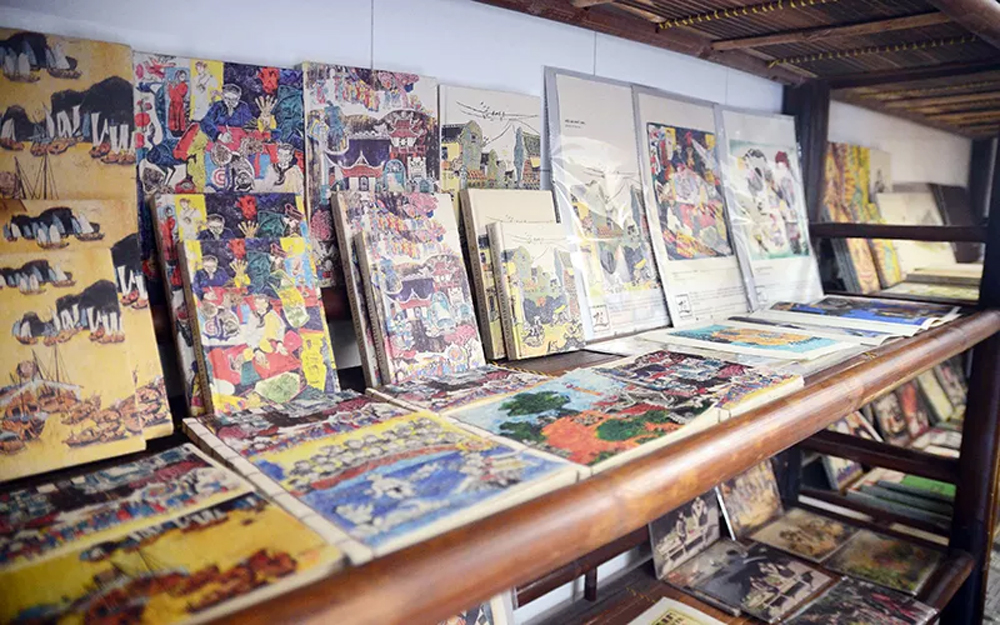 |
|
Postcards and paintings made from Do paper. |
The making of Do paper is hard work, which takes practitioners around 15 days to finish from the preparation of material to production. First, Chuc has to go to the forest which is around 8 kilometres from his house to chop down trees. The bark of the trees is then carefully peeled off and simmered in water and wood ash.
The maker then soaks the bark in water for a few days, before thrashing it into the mixture which will be poured into the water again and stirred to create a mixture of wood pulp. Wooden frames in different sizes are used to turn the wood pulp into paper. A thin cloth is stretched on the surface of the frame and clipped with wooden bars.
After that, the maker pours water over the pulp and slowly spread the mixture onto the cloth on the frame then rolls it flat. The water will then leak through the cloth, leaving the pulp adhered on the surface. Next, the frames will be dried and become a large sheet of paper. At that time, the maker will carefully separate the paper from the frame.
According to Chuc, every 10 kilograms of fresh tree bark can produce four kilogrammes of dry materials, equivalent to 120 paper sheets.
The 57-year-old man also shared that the most challenging obstacle facing the craft is finding cheaper ways to develop the products due to its high price and the fierce competition from the mass-production of paper.
Discussing the problem, Pham Quynh Chi, a member of Zo Project, said that as a social enterprise, Zo Project targets to conserve material areas, improve the handmade paper manufacture towards environmental-friendliness and sustainability, and generate more jobs for ethnic community groups.
It also aims to increase the value of Vietnamese handmade paper and its making technique in a sustainable and creative way by applying the material in making paintings, calligraphy, calendars, postcards, paper fans, or even jewellery such as earrings and bracelets. The products are now on sale for international visitors at souvenir shops and restaurants.
In addition to the design and manufacture of products made from Do paper, the project also opens workshops in Hanoi and Hoa Binh province on encouraging initiatives on the paper and other handmade papers, in order to bring the papers into modern life and promote the value of traditional culture.
The project also arranges paper making tours to Suoi Co every two weeks, providing tourists with not the only insight of the beautiful and cultural heritage of the papermaking art, but also a relaxing day in a peaceful and amicable atmosphere.
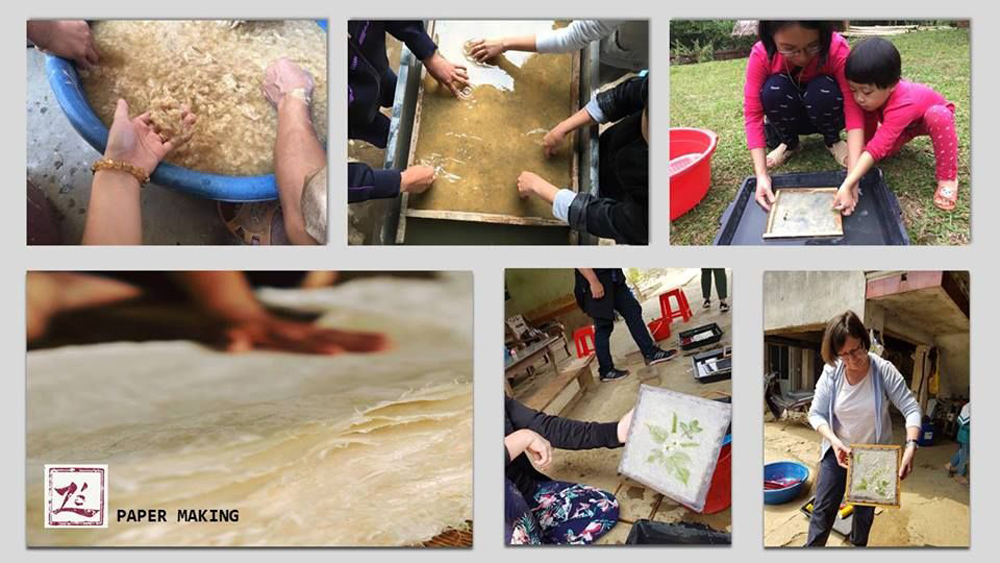 |
|
Visitors have |
During the tour, participants will be able to have a first-hand experience watching the process of making paper from when it is just the bark of a tree until it becomes the completed paper only by hand. They are invited to try their hands at making their own paper by themselves and decorating it with flowers, corn and plants, under the instruction of craftsmen.
Le Hong Ky, a member of the Zo Project, revealed that her team is seeking investment to construct a stilt house in Suoi Co, making the village an interesting destination to develop tourism, thus contributing to improving the income of local Do paper makers.
Source: NDO
 Bắc giang
Bắc giang





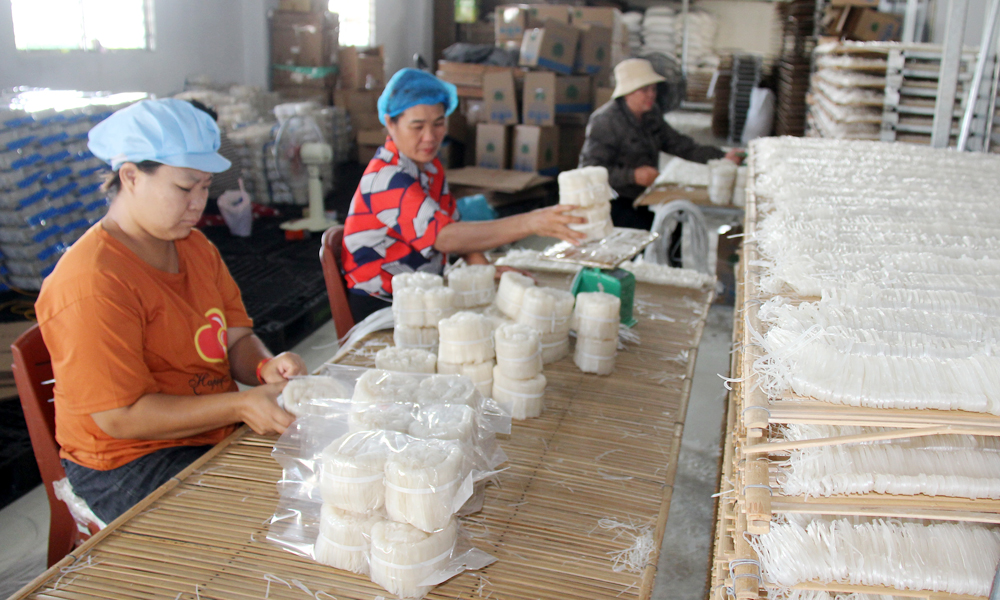


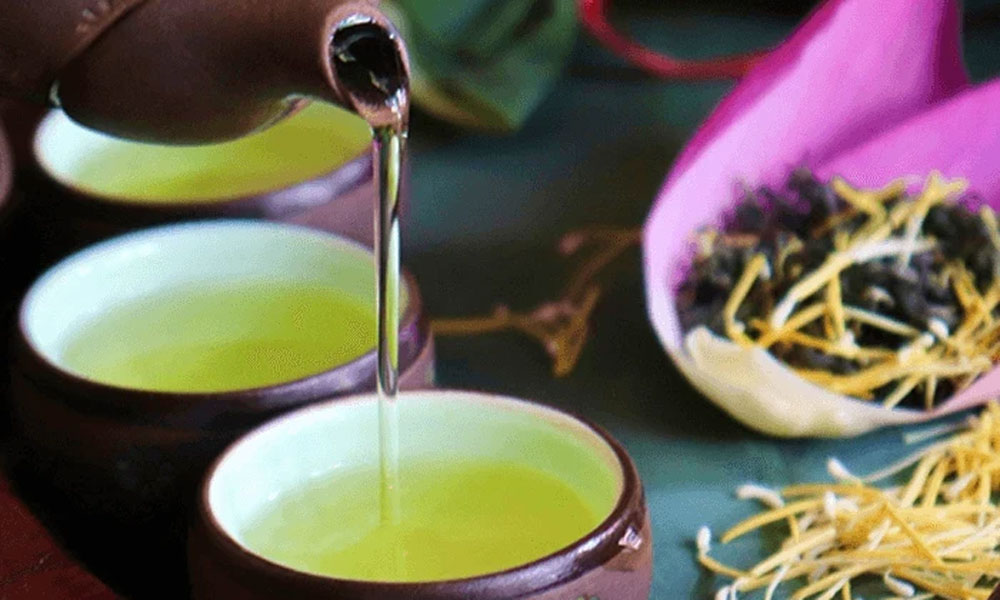







Reader's comments (0)